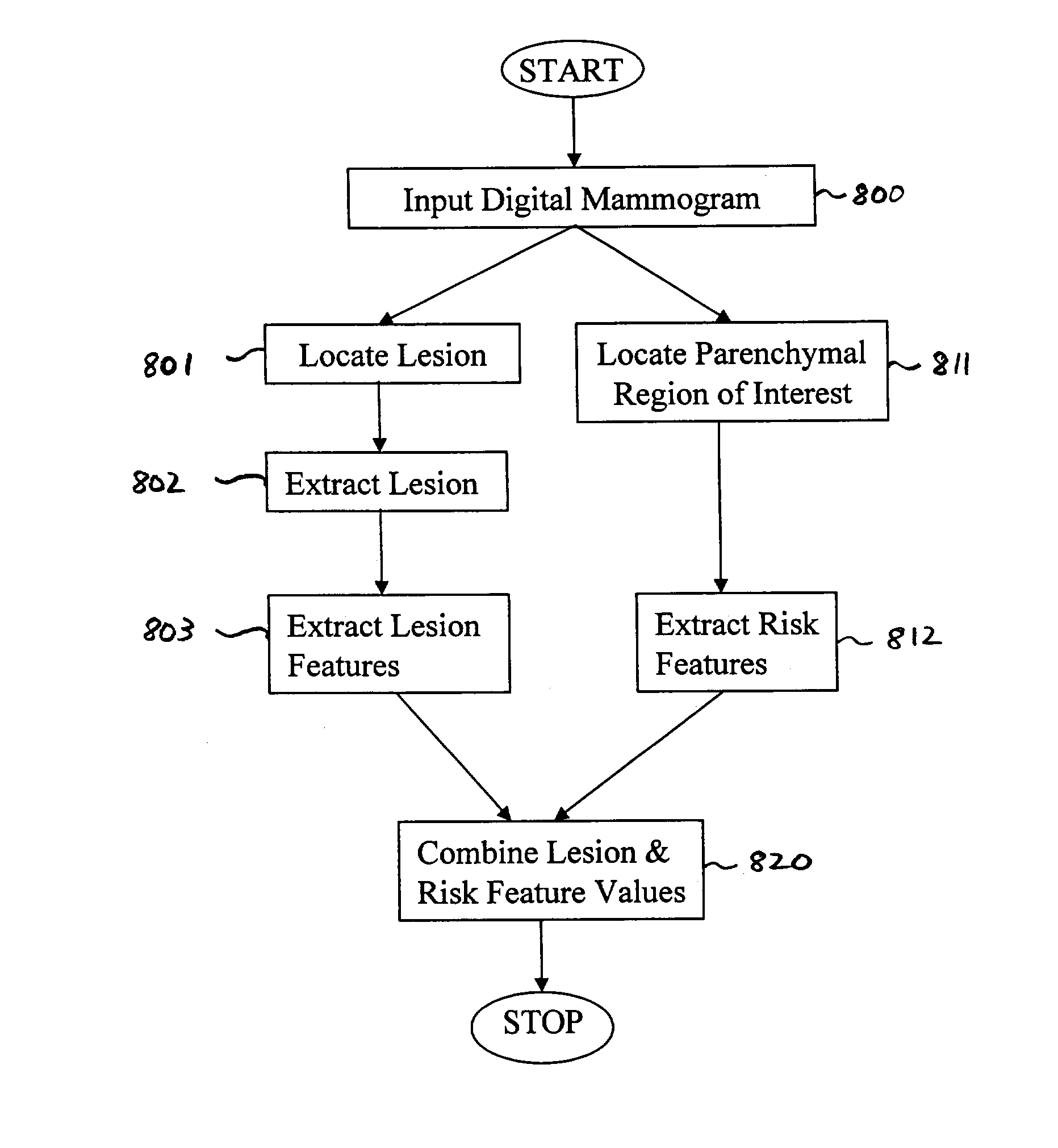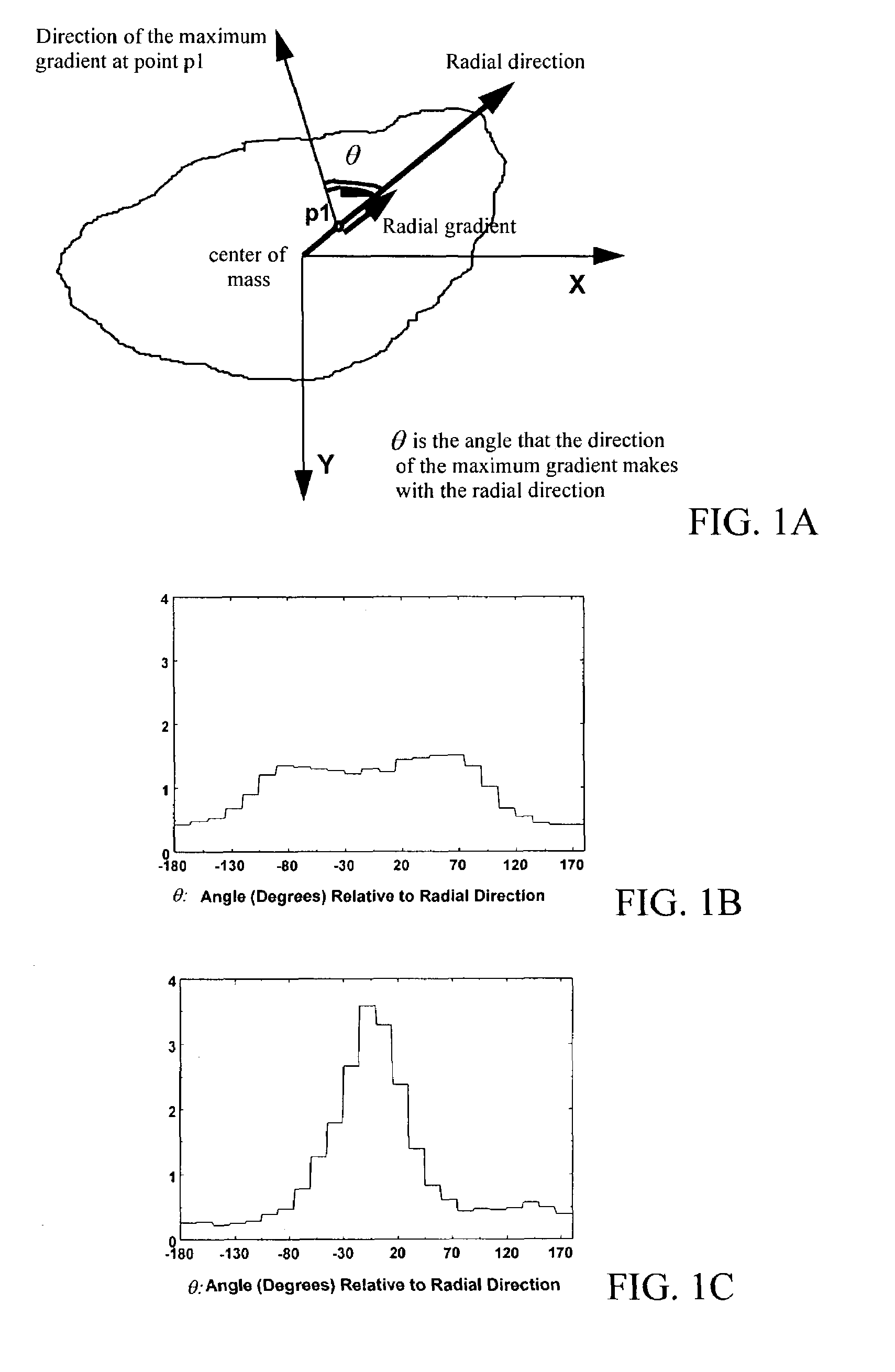Method and system for risk-modulated diagnosis of disease
a risk-modulated diagnosis and disease technology, applied in the field of computer-aided diagnosis, can solve the problems of poor characterization of lesions, high risk of breast cancer in women under 40 years, and complicated clinical acquisition of x-ray mammograms, so as to improve the characterization of lesions and improve the effect of computer-aided diagnosis
- Summary
- Abstract
- Description
- Claims
- Application Information
AI Technical Summary
Benefits of technology
Problems solved by technology
Method used
Image
Examples
second embodiment
[0248]FIG. 8B illustrates a method for risk-modulated diagnosis according to the present invention. Note that in FIG. 8B, steps 800, 801, 802, 803, 811, and 812 are identical to the similarly identified steps shown in FIG. 8A.
[0249]In step 804, the lesion feature values calculated in step 803 are combined, e.g., using linear discriminant analysis to determine an indication of whether the lesion is benign or malignant. Similarly, in step 813, the risk features values calculated in step 813 are combined to determine whether the individual associated with the digital mammogram is a high or low risk individual. Note that an artificial neural network or other appropriate classifier may be used in step 804 and / or step 813.
[0250]In step 830, the output from each LDA (calculated in steps 804 and 813) is normalized and then multiplied together in step 830 to yield a risk-modulated measure characterizing the lesion. The classifier output that characterizes the lesion is weighted by the output...
third embodiment
[0251]FIG. 8C illustrates a method for risk-modulated diagnosis according to the present invention. Steps 800–803 and 811–813 are the same as described above with reference to FIGS. 8A and 8B. Here the risk classifier (using, e.g., a LDA) is trained with, e.g., four risk parenchymal features, in the task of distinguishing between high- and low-risk individuals.
[0252]In step 814, the output of step 813 is normalized. In step 815, a threshold is then used on the normalized LDA (or classifier) output to separate the individual into the high risk population or the low risk population. For example, based on previous data, one can use the computer-extracted risk features that correspond to a Gail model risk output of less than 20% for the low risk group. Anything higher than 20% can be considered as high risk.
[0253]The lesion classifier is retrained with the (in this case) five lesion features separately, for the high risk group and the low risk group. If the inquiry in step 815 determine...
PUM
 Login to View More
Login to View More Abstract
Description
Claims
Application Information
 Login to View More
Login to View More - R&D
- Intellectual Property
- Life Sciences
- Materials
- Tech Scout
- Unparalleled Data Quality
- Higher Quality Content
- 60% Fewer Hallucinations
Browse by: Latest US Patents, China's latest patents, Technical Efficacy Thesaurus, Application Domain, Technology Topic, Popular Technical Reports.
© 2025 PatSnap. All rights reserved.Legal|Privacy policy|Modern Slavery Act Transparency Statement|Sitemap|About US| Contact US: help@patsnap.com



